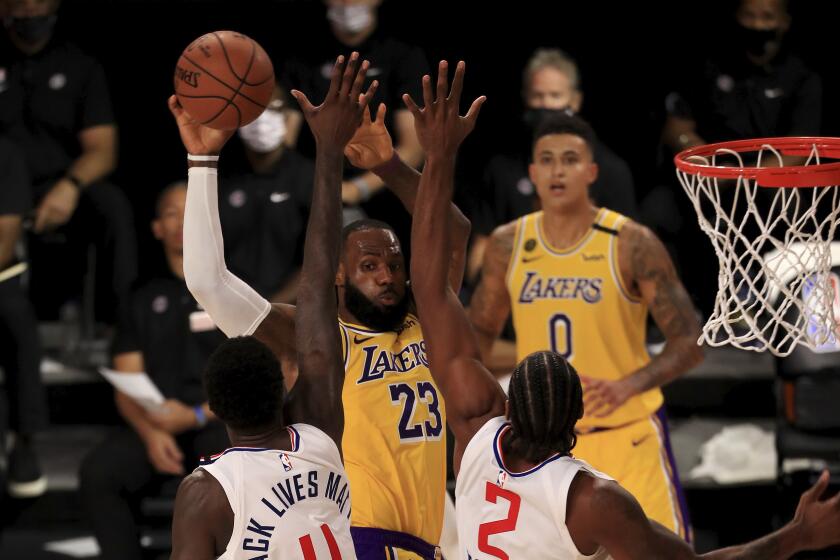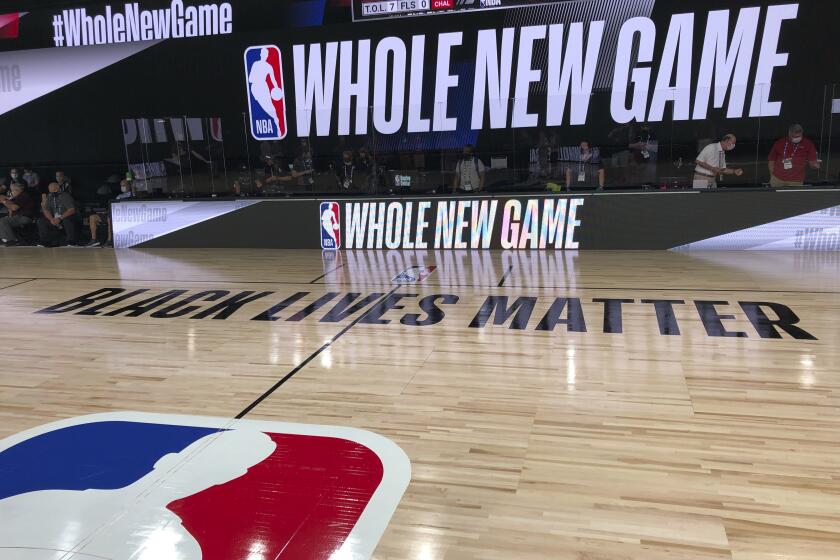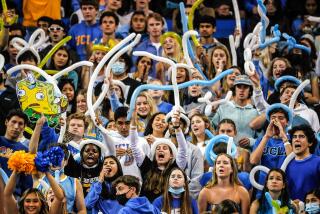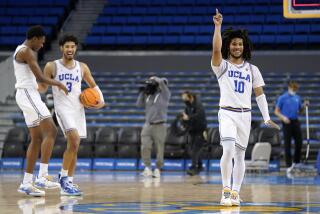No adrenaline buzz? No more choking? How no fans in the stands affects athletes
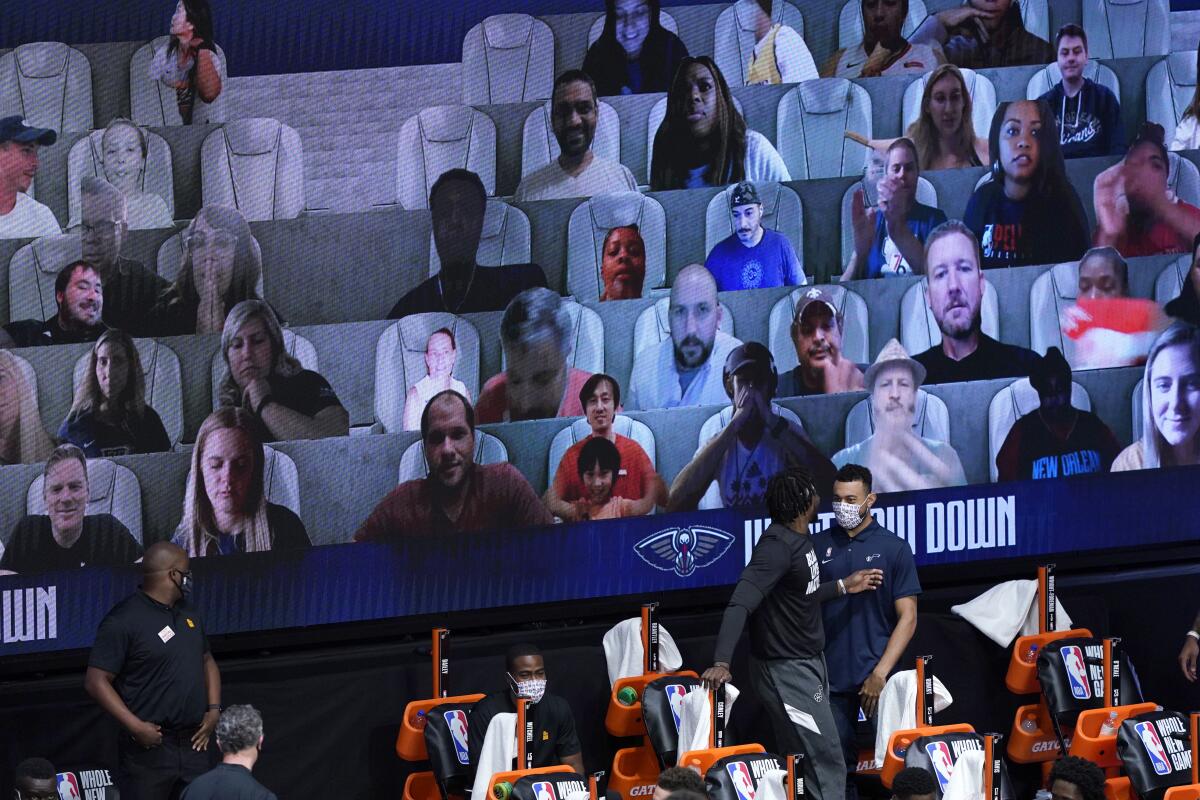
- Share via
There is something eerie about the fans that appear on giant video screens surrounding the basketball court. They clap and shout in cyber-static fashion, like a scene from “Blade Runner.” Their cheering blares over loudspeakers.
The NBA hopes this virtual crowd will pump life into empty arenas at the “bubble” in Orlando, Fla., where the league’s virus-interrupted season has resumed. Ben Simmons has a suggestion for making things more realistic.
“They better put some boos in there for us,” the Philadelphia 76ers star told reporters. “Because if we’re not playing hard, we want to hear those boos.”
His coach didn’t sound convinced. Brett Brown said: “It’s like we’re playing in a video game.”
Though the Lakers-Clippers season opener had plenty of energy, the home teams might face a very different situation in matchups against the Denver Nuggets or Sacramento Kings. Will the playoffs be quite as intense without a roaring crowd? Pro basketball is merely one of the sports adjusting to life during a pandemic, to games minus fans.
Golfers, baseball players and race car drivers have already pined for the sound of applause, and pole vaulters miss the slow, rhythmic clapping that normally precedes their run-up. There is no one to boost the energy in the fourth quarter.
“We’ve got to be self-motivated in this environment,” Portland Trail Blazers forward Carmelo Anthony said.
The Lakers’ 103-101 defeat of the Clippers in a cramped, quiet Disney World gym was played as if both teams were hanging out in a Figueroa hallway.
Athletes have always been part showmen, eager to entertain, so sports psychologists wonder if the lack of crowd response might affect focus, effort and even strategy in the games we now watch from a televised distance.
“It’s like a stand-up comic performing in front of a camera instead of a live audience,” said Dan Weigand, former editor of the Journal of Applied Sport Psychology. “In our profession, there is a lot of discussion about this. It’s a unique situation and we don’t know what to expect.”
Just four months ago, as the country struggled to comprehend the severity of the novel coronavirus, LeBron James voiced hesitance about sequestered basketball.
“We play games without the fans?” the Lakers forward asked. “Nah, it’s impossible.”
But in the lockdown that followed, sports officials found no safer alternative. The MLS and PGA Tour barred spectators when they resumed play, as did Major League Baseball and NASCAR. The NBA resorted to broadcasting crowds into the arena by way of 17-foot LED screens.
“Obviously it’s better when it’s with fans,” LAFC coach Bob Bradley told reporters from the MLS Is Back tournament. “That brings the game to life.”
At the intersection of athlete and audience is a concept known as “social facilitation” — the urge humans feel to be at their best in front of others. Psychologists believe this impulse triggers a host of physiological changes.
Sweaty palms and an elevated heart rate, a surge of adrenaline. Kay Porter, an Oregon-based mental preparation coach, says “players get a buzz of energy and it’s palpable.”
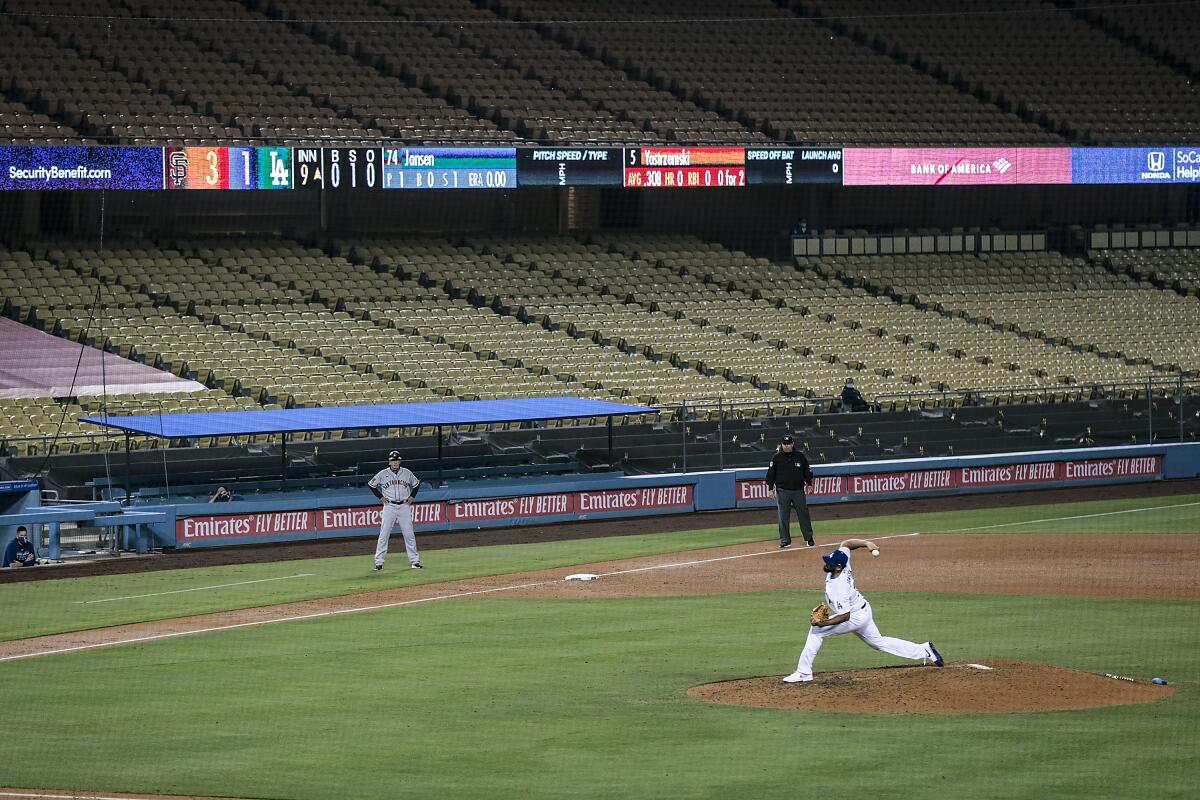
The result can go in different directions.
Some athletes feed off adrenaline, harnessing the extra strength and endurance, sharpening their focus amid the din. Even a cascade of boos can be motivating, Weigand said.
But the rush can be counterproductive in sports that demand finesse and fine motor skills. It can increase production of cortisol, the primary stress hormone, and cause muscles to tighten.
“Part of what we call ‘choking’ is a debilitation of your normal swing or your normal free-throw motion,” Weigand said. “That [reaction] is the interpreting of physiological arousal in a negative way.”
Subtracting this element, for good or bad, might alter performances on the field of play, experts say. The absence of sound — no more roaring crowds — might also have an impact.
“We have a strong association between our motor system and our auditory system,” said Laurie Heller, a Carnegie Mellon University professor who specializes in cognitive science. “Really, really loud crowd noise is stress-inducing, it gets your cortisol a little higher.”
As one of the first major sports to return, golf has served as a test case. Some players have enjoyed the change; the relative quiet helps with concentration, they say, and no one misses a beer-guzzling fan hollering “Get in the hole” every time they swing.
Others have missed the crowd and especially the rumble that arises when someone makes a Sunday afternoon run at the lead. Without a gallery, Jordan Spieth said, there are no bodies to stop wayward tee shots from bouncing into the woods. Zach Johnson said of playing on empty courses: “I mean, it’s odd.”
The NBA has planned to the tiniest detail to keep its bubble environment sanitized, including covering for referee whistles. A look at the safety protocols.
Heller wonders if athletes might experience what she calls “an audiovisual disconnect.”
Because humans instinctively form associations between what they see and hear, players might be momentarily surprised when they make a dazzling play but get no cheers in return. Baseball and basketball players might find it strange to hear artificial crowd noise amid rows of empty seats.
“To the extent that it distracts someone, anything that takes away from our concentration will detract from our performance,” Heller said, adding that “I do think you can get used to it.”
After driver Kevin Harvick won the Pocono Organics 325, he talked about celebrating on the track without fans around. No use doing burnouts or jumping on top of his car, he said, because it “doesn’t feel right.”
NASCAR has since begun welcoming spectators back in limited numbers, but golf canceled a similar plan. Other sports, including the NHL, which launches its tournament play this weekend, might not allow spectators until next year.
So what should athletes do in the meantime?
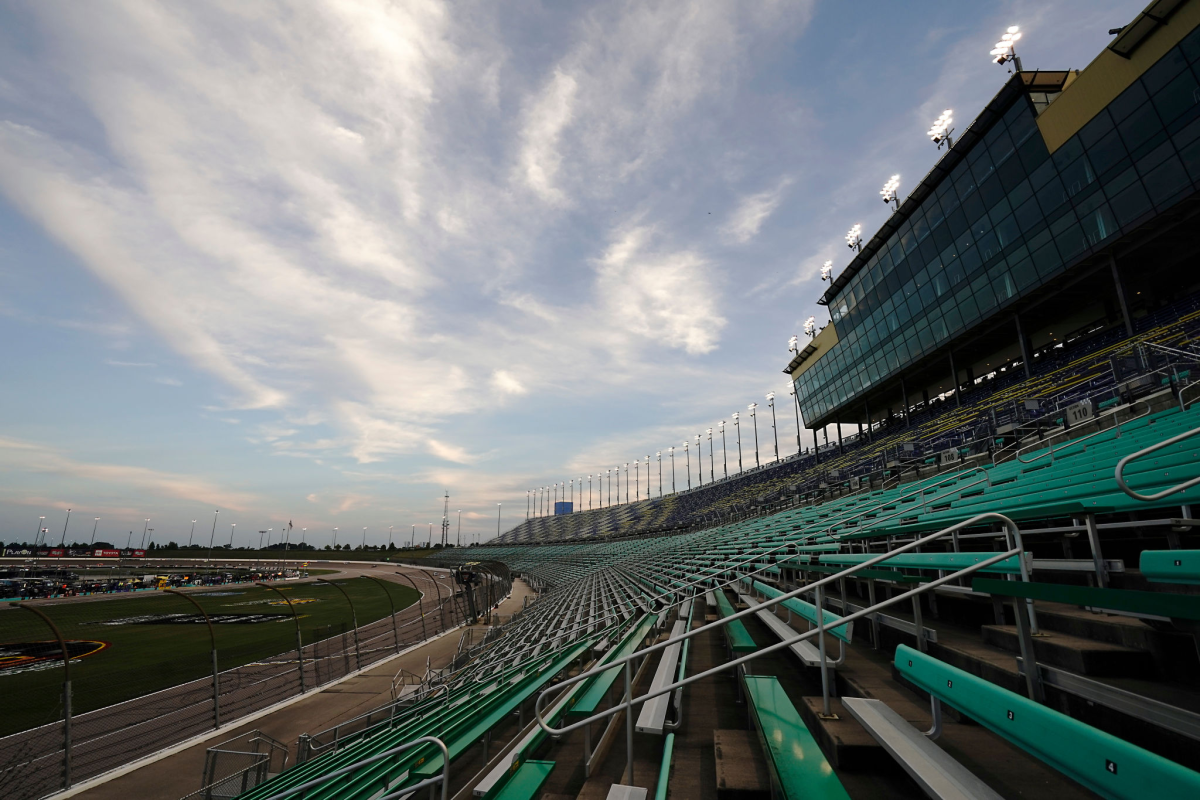
Golfers say they might have to watch the leaderboard more closely because they won’t have cheers echoing across the course to alert them when a rival has made a birdie on another hole. A few have mentioned being more careful when chatting with their caddies because television microphones catch a lot more now — Heller points to this loss of “audio privacy” as another distraction.
NBA players say they will have to execute a little more sharply because the other team can hear their coach calling the offensive play.
When it comes to motivation — teams won’t always have a crosstown rival to get them excited — sports psychologists say the athletes that focus on adapting to the new circumstances will fare best. They wonder if mental preparation specialists are getting more work these days.
Porter suspects athletes will find individual strategies, such as psyching themselves up by listening to music in the locker room. Weigand suggests a few additional tricks on the field.
“You may have to generate your own emotions by using things like self-talk or a physical reminder like slapping your leg,” he said. “You need to think about these things before the game, things to generate physiological arousal.”
The NBA’s new normal still feels weird to some players, but Anthony sees at least one silver lining. Even with the piped-in crowd noise and music, he listens for things normally drowned out by the fans.
That includes trash talk.
“Honestly, it’s kind of a fun environment,” he said. “You hear everything.”
More to Read
Go beyond the scoreboard
Get the latest on L.A.'s teams in the daily Sports Report newsletter.
You may occasionally receive promotional content from the Los Angeles Times.

